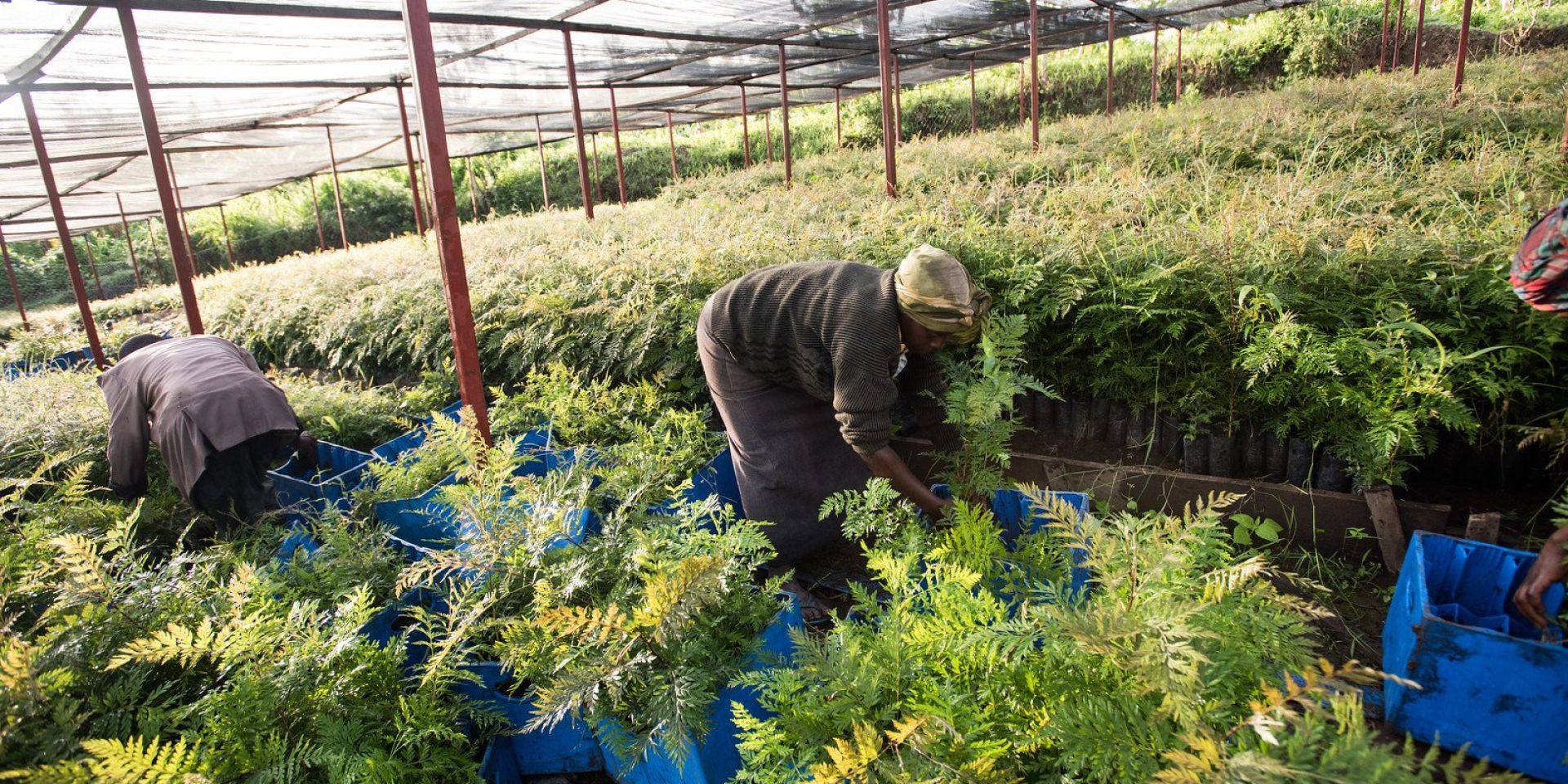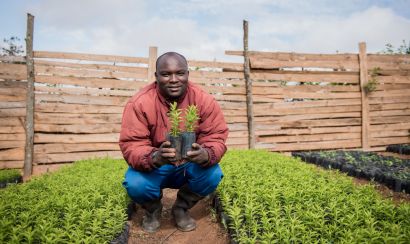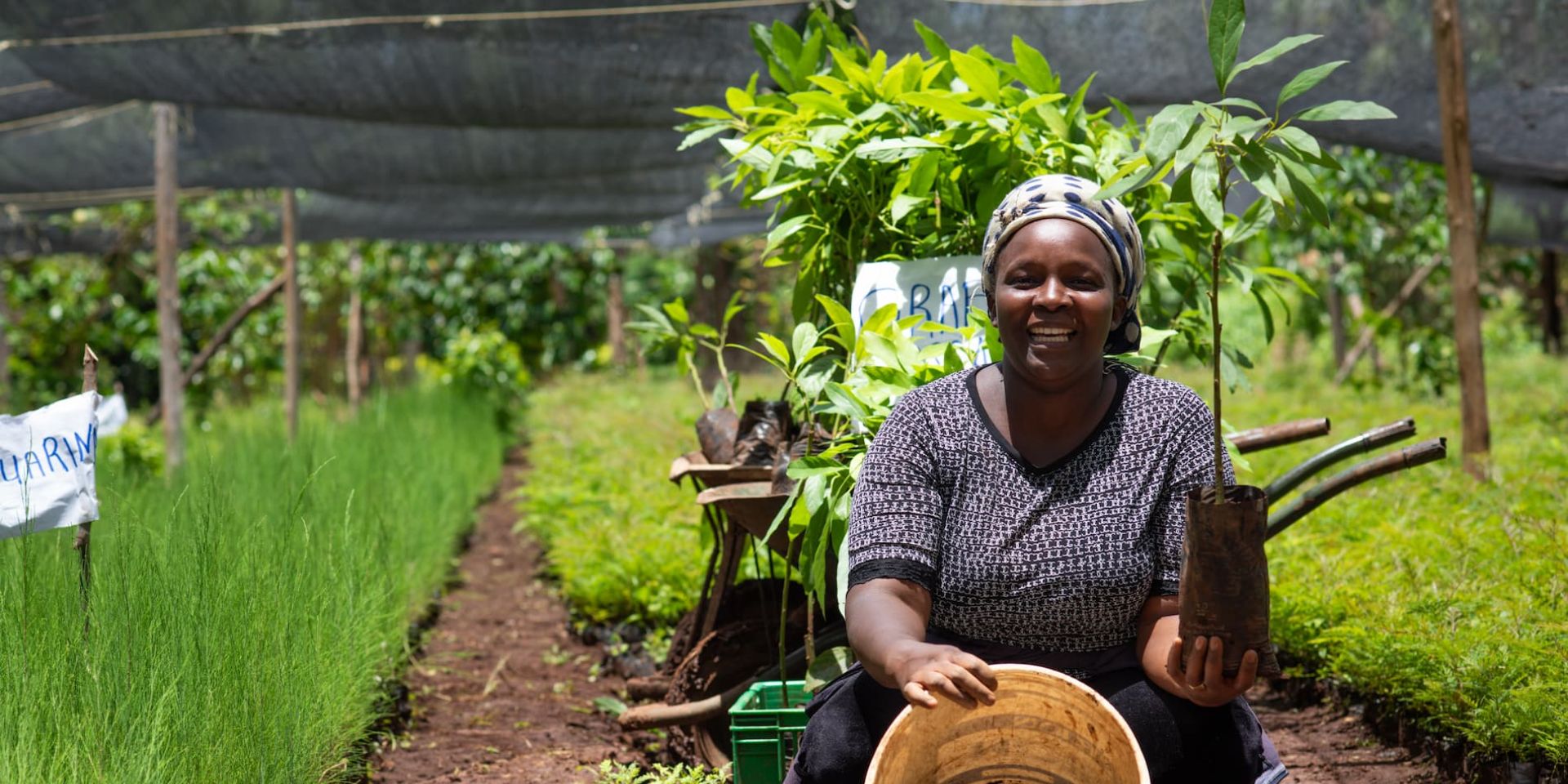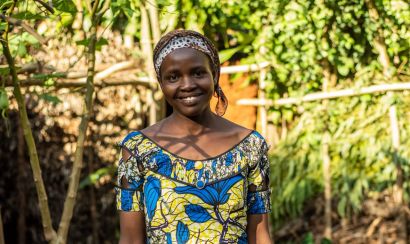Updates from One Acre Fund's Tree Program in Kenya
Why do trees matter so much?
For starters, they grow quickly, can serve as firewood and livestock fodder, they provide shade, and protect against soil erosion. We’ve calculated that having these trees results in an additional $55 per year for farmers. They are also good for the environment: grevillea specifically keeps nutrients in the ground, and its leaf mulch improves soils. Trees in general help reduce the amount of harmful CO2 gas in the atmosphere. In 2014, One Acre Fund helped plant an average of 30 trees per client in Kenya.
Finally, grevillea trees function as a kind of long-term savings plan for farmers. If farmers allow these trees to grow for several years, they can realize a profit that’s 50 times what they paid for the seedlings. Trees can be planted on the borders of land, leaving crop acreage open for planting. Once they’re mature, farmers can cash them in and pay for large expenses such as school fees or new livestock.
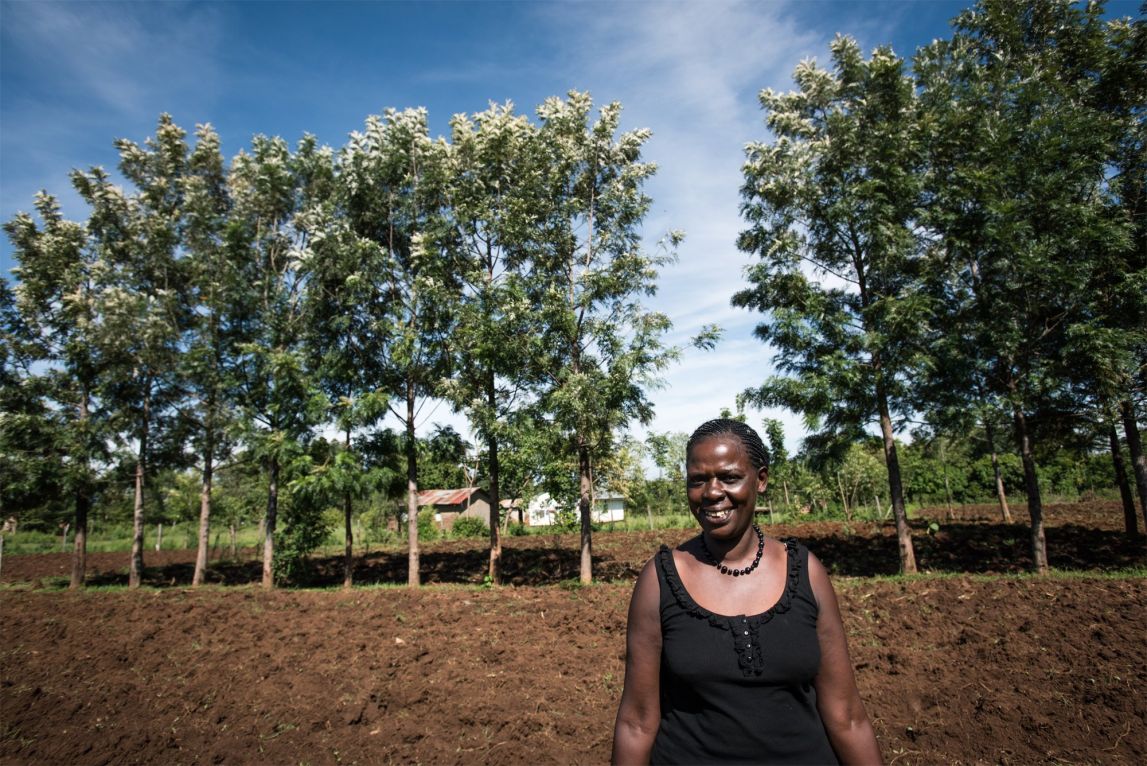
A large part of our tree program is about encouraging farmers to keep their trees in the ground so they can benefit from this exponential increase in value. But in the meantime, we’re training farmers in the most effective ways to plant and care for these valuable trees. Since 2011, we have experimented with hundreds of variations to find the most effective agricultural techniques to offer our farmers.
Here is a rough timeline:
2011: One Acre Fund farmers are first offered grevillea trees
2012: 10 million trees campaign begins (a mark we are on track to achieve this year!)
2013: Opening of a permanent tree research station, experimentation with seed bag storage and tree planting substrates, and a tree sales behavior modification trial (ongoing through 2015)
2014: Trials with new socketing method of planting trees
2015: Rollout of new socketing technique to 40,000 farmers
High germination rates are crucial to providing value for farmers. For grevillea trees, numbers that would seem unacceptable in our maize fields – 40-45 percent germination - are the some of the best possible lab-germinated rates (maize is typically 90-95 percent). This makes small margins matter. At the scale of 10 million trees in 2015, germination increases of only 1 percent have a massive impact. In 2015 trials, with better seeds and using the PICS bags (hermetically sealed storage bags that maintain low humidity), we’ve seen 48-50 percent germination, up from 38-40 percent in 2014.
The rate of growth soon after germination is equally important. And this is what makes the picture below so exciting.
In 2014, we introduced the concept of sockets – a new separated planting method for tree seedlings. Separating seedlings into sockets decreases competition and allows more nutrients to go to each individual tree. The picture above is our socket trial intervention (right) and control (left) after running for many months.
In 2013 and 2014 we experimented with our planting substrate – the mix of soils used to plant our trees. In 2014 specifically, we trialed many variations of our soil mix (including things like sand and clay) in an effort to determine what would be good for tree seedlings. Our main takeaway? Keep it simple – soil alone, with a small mix of fertilizer, is equally effective and the easiest for our farmers to implement.
From 2014 and into 2015, we have scaled up our next phase of research, trialling these methods across districts in Kenya. Our product innovations process tests to ensure farmers achieve the same results that we see in our research station. One Acre Fund farmers were eager to get started.
Farmers are hard-working and driven, eager to make a better life for themselves and their families. In product innovations, the team that runs the One Acre Fund grevillea program, we are also driven. The rigor we apply to our trials is guided by the prospect of knowing how to help more farmers increase their incomes, feed their families, and educate their children.
The trees farmers have planted – millions of them – will be in the ground for years to come. We plan to be here to see them plant many millions more.
